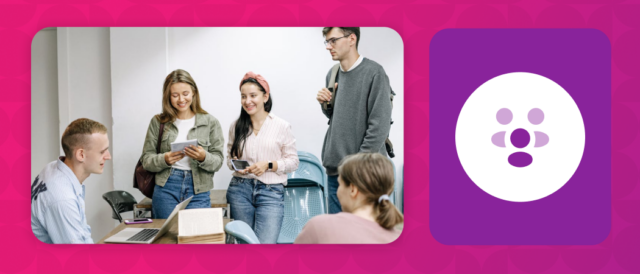Table of contents
ToggleAs we’ve seen in this post, reinforcement activities in e-learning courses are a powerful tool to measure students’ learning. They also serve as a guide to ensure students stay in line with key concepts while they advance.
The most common use of reinforcement activities is self-assessment. Placing them immediately following theory means students can prove they have mastered the key points and continue advancing in the course. However, we can also take advantage of reinforcement activities at other times during our courses to capture attention and avoid monotony. Do you want to see how? Keep reading!
Reinforcement activities to measure previous knowledge
Not all students have the same level of knowledge. For example, in a course made up of 10 sections, some students will need to start from the beginning, while others will be familiar with basic concepts and therefore able to start from sections 2 or 3.
Reinforcement activities can be extremely useful for dealing with this knowledge gap creatively. Place an activity at the start of the course and personalize the experience so more advanced students don’t repeat what they already know. Include a small questionnaire with key questions, or ask the students directly if they are familiar with determined concepts.
Depending on their answer, you can direct them to the appropriate section in the course. Be sure to remind students that the final course assessment will include all content, so if they are unsure of what they are skipping, they should review it just in case.
Tip: For this type of navigation to work, configure your course in isEazy Author with free navigation and with evaluative tracking so that the course evaluates the student according to their final grade.
ABC type exercises in isEazy Author are ideal for this, because they allow you to ask students questions using text and images.
Reinforcement activities to examine beliefs or habits
If your objective is to challenge previous knowledge and provide totally new information, reinforcement activities can help. Students can identify what their current beliefs are, and how they match the knowledge they will receive in the course. A creative way to do this, for example, is by including a True/False activity where students answer a series of questions.
Remember that in isEazy Author you can create very visual True/False reinforcement activities with the Grouping activity:
Reinforcement activities to replace theory
Especially in long courses with various sections, theory can be tedious. Here, you can use reinforcement activities to maintain focus.
A fun way to do this is using the fill the blanks resource (in isEazy Author). By providing students with an incomplete phrase and a word bank, we are encouraging them to think about and understand the content. This way, the student is less likely to get bored and simply scan through the theory instead of internalizing it.
In addition to these exercises, in isEazy Author you have several games that you can use as reinforcement activities: the Alphabet game, Swipe, Trivia or Memory.
Alphabet: The classic definition game to stimulate learning through fun. This game is ideal to replace theory with activity. List some questions (with images if needed) and ask students to think before answering.
Swipe: Compete against the timer to sort the cards between two options.
- Trivia: Click on the wheel to randomly select a category and complete the whole circle by answering the questions. Try it as many times as you need until you win the category.
- Memory: With this interactive feature, you can create fun games where the learner will need to find pairs/related cards.
To make this more entertaining, you can add a timer and wild cards so your students concentrate fully on the game.
Tip: Combine games and activities with other resources, for example, an e-learning video, for a unique learning experience.
When should I use reinforcement activities?
The amount of reinforcement activities you include will depend on the length of your course and the key concepts you want to promote. Think first:
What are the key concepts? Make a list of the essential points you want to reinforce with your students.
Where are these key concepts placed in the course? Review your course and find out which sections you’ve placed those key concepts in. If they are all concentrated in the same section, it is a good time to consider the structure. Your course should be interesting from A to Z.
If your key concepts appear throughout the course, try placing reinforcement activities immediately afterwards. This will be beneficial for your students, since they will receive information which they can quickly put to practical use.
If you still have doubts, place a reinforcement activity every 6 or 7 slides. Generally speaking, this is a good time to reinforce learning and speed up the pace of the course. But try to make the activities fast and dynamic, so that the student doesn’t feel in continuous evaluation.
With these activities, the student feels more motivated and committed, resulting in higher rates of knowledge retention.
Do you usually use reinforcement activities in your e-learning courses? Which ones do you like the most? Discover how easy it is to include them in your online training with isEazy Author.


















